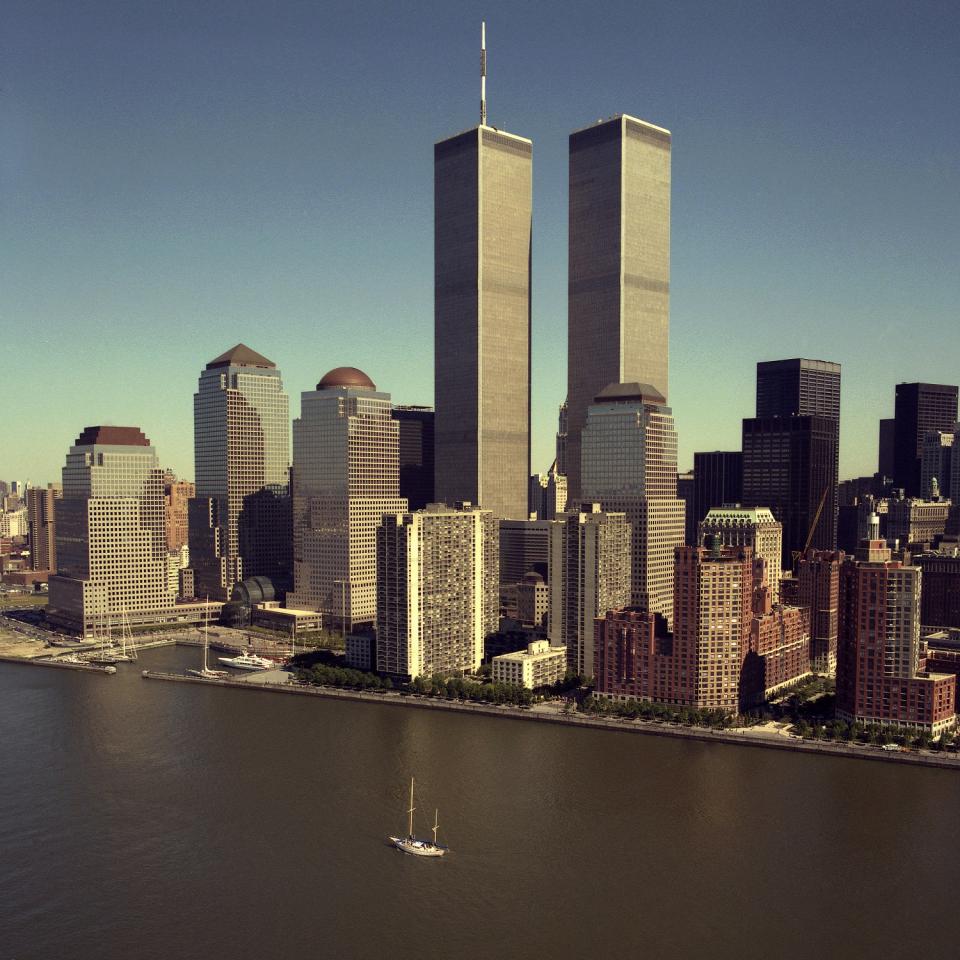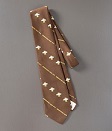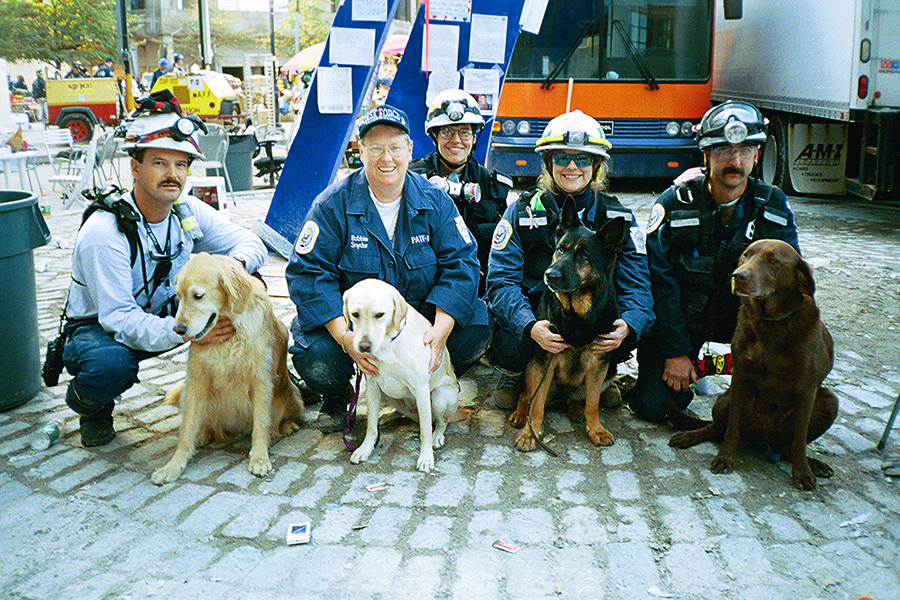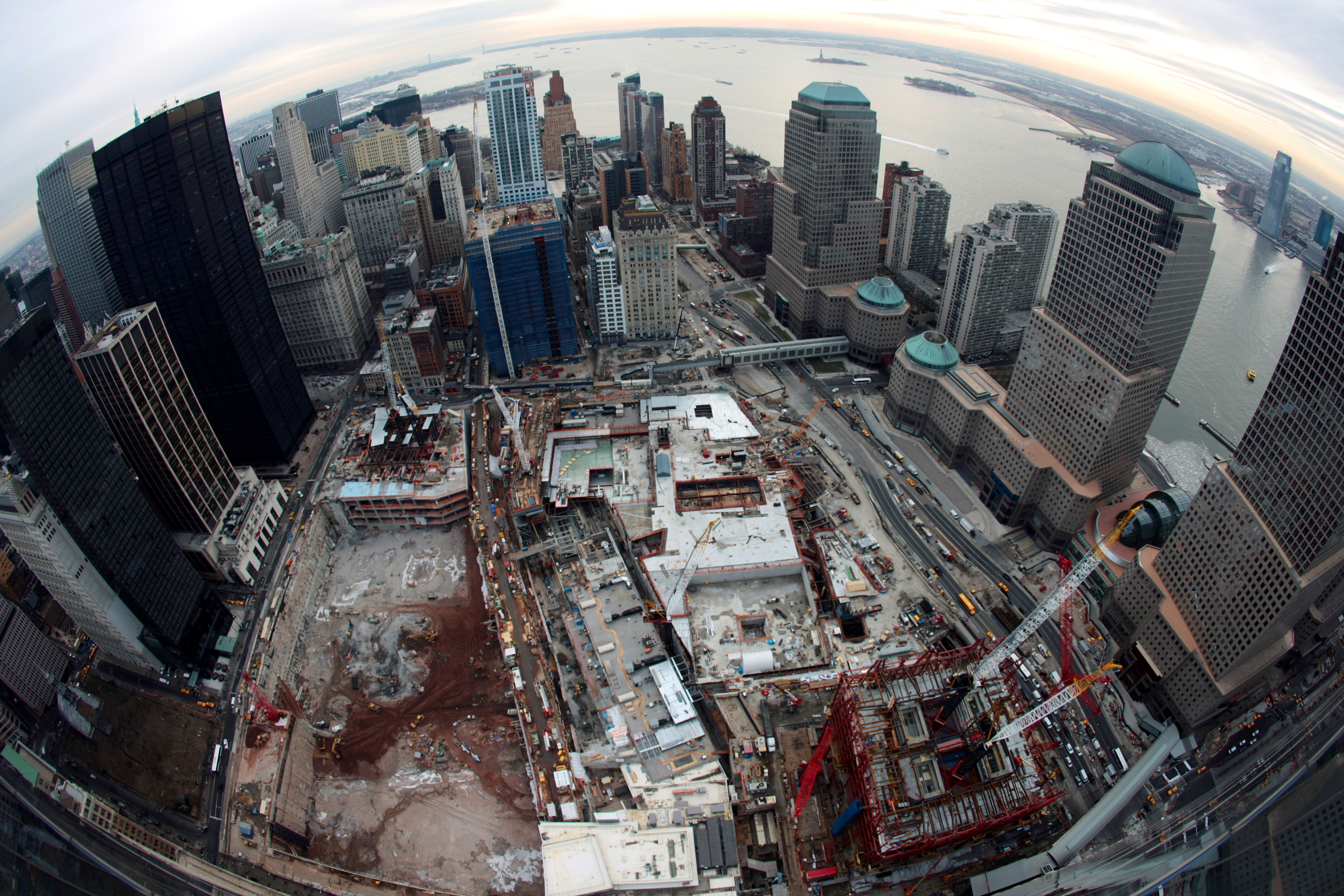Make a donation to the museum
One Artifact, Two Stories: Remembering the South Tower Observation Deck
One Artifact, Two Stories: Remembering the South Tower Observation Deck

The views from the Top of the World Observatories were unrivaled. On a clear day, visitors could see for miles and soak in 360-degree views of New Jersey, Brooklyn, Long Island and beyond. Attendants of the observation deck wore official uniforms that included brown silk neckties with a pattern of the twin towers emerging from a swirl of clouds.

Two of those ties have been donated to the 9/11 Memorial Museum’s collection. One, which belonged to Port Authority Police Officer Alfonse Niedermeyer, is now on view in the museum’s historical exhibition.
In the summer between his graduation from high school in Queens and college at the University of Dayton in Ohio, Niedermeyer worked at the World Trade Center as an observation deck attendant. Almost two decades later, he responded to the Sept. 11, 2001 attack. After his death, his widow Nancy donated his uniform tie in his memory.
The second tie evokes memories of the World Trade Center as a tourist destination. When D.C. resident Margaret Benner visited the observation deck in the late 1970s, she spotted an attendant wearing one. At the time, Diane Keaton’s character in Woody Allen’s 1977 film “Annie Hall” had started a trend of women wearing neckties and Benner wanted one for herself. The tie wasn’t sold in the gift shop, but a sympathetic attendant offered her one from the employee uniform surplus.
Years later, the 9/11 Memorial Museum would accept Benner’s tie into its collection to serve as an alternate to Niedermeyer’s tie. It is common practice for museums to collect duplicate objects – in the case of textiles and other light sensitive items, artifacts only remain on view for a limited time for conservation reasons.
Together, the ties serve both as a memorial to Niedermeyer’s memory and service on 9/11, and as a nostalgic symbol of a time in the city’s history.
By Jenny Pachucki, 9/11 Memorial Content Strategist
Previous Post
Oral History Collection Expands, Includes Veterinarians’ Contributions to 9/11 Recovery Efforts

Canine recovery workers searched tirelessly in the aftermath of 9/11 to recover victims’ remains.
Next Post
An aerial view shows construction at the 9/11 Memorial site. The buildings of lower Manhattan and New York Harbor are visible in the distance.

As winter settles in New York City, we look back seven years ago to January of 2010 when the World Trade Center site and the 9/11 Memorial were being built.